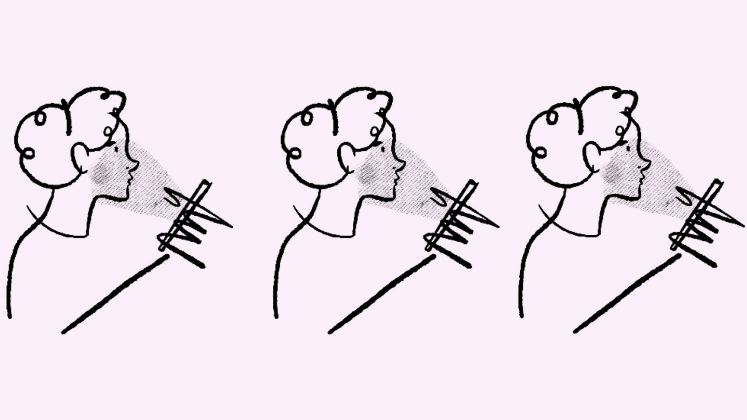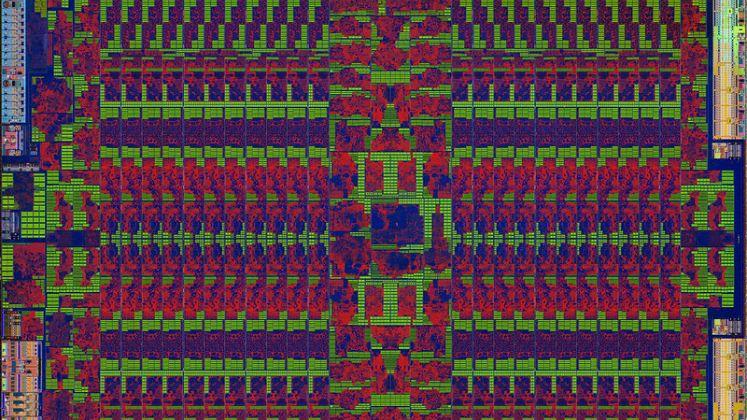The ability to manipulate and generate images with new technologies presents challenges to traditional media reporting and scholarly communication. However, as Joshua Habgood-Coote discusses, the history of fake images shows that rather than heralding a mass breakdown in trust, technological innovations have fed into ongoing social problems around the production of knowledge.
We seem to be surrounded by images and videos of events that didn’t happen: Pope Francis stepping out in Balenciaga swag, President Trump being arrested, the Pentagon set on fire, Tom Cruise jumping over Keegan-Michael Key. These images are unsettling, and many commentators and academics take them to raise difficult questions about the veracity of visual media. Many people think that we should be worried by fake photographs:
“Who, henceforth, can trust the accuracy of a photograph? […] What ravage will this possibility make of private reputation, and what confusion entail on the historian of future times. Photographs have been treasured in a belief that, like figures, they could not lie, but here is a revelation that they may be made to lie with a most deceiving exactness.”
 This kind of rhetoric makes it seem that we are facing down something like an epistemic apocalypse. Except that this warning doesn’t come from 2023, but from 1869. This passage is part of a column from the New York World (quoted in Andie Tucher’s book Not Exactly Lying) and was written in the aftermath of the trial of William H. Mumler, who was tried (and acquitted) for fraud and larceny for selling ‘spirit photographs’ which represented sitters alongside their dead relatives.
This kind of rhetoric makes it seem that we are facing down something like an epistemic apocalypse. Except that this warning doesn’t come from 2023, but from 1869. This passage is part of a column from the New York World (quoted in Andie Tucher’s book Not Exactly Lying) and was written in the aftermath of the trial of William H. Mumler, who was tried (and acquitted) for fraud and larceny for selling ‘spirit photographs’ which represented sitters alongside their dead relatives.
Throughout the history of photography, views about the reliability of visual media have tended to fall into two camps. On the one side we find figures like William Fox Talbot (inventor of the calotype process), who in 1844 proclaimed photography to be the pencil of nature. Defenders of the reliability of photography have stressed the distinction between photography and drawing and painting, arguing that while “the painter constructs, the photographer discloses“. On the other side, other photographers became enamoured with the creative affordances of photographic media, arguing that there is not an important difference between the human involvement in photographs and paintings.
Each side has their own aesthetic. ‘Straight’ photography centred on the photograph’s fidelity to the scene and frowned on any manipulation, whereas the Pictorialisst, approaches, such as that of Henry Peach Robinson, often stretched the relation between the photograph and any recognisable scene and revelled in the possibilities for editing and creative development.
The current panic about deepfakes is in fact part of this longer history of debates about the epistemic and aesthetic roles of photography. Warnings about deepfakes tap into the same concerns that abounded in the wake of Mumler’s trial. Here’s Franklin Foer writing in the Atlantic in 2018:
“The problem isn’t just the proliferation of falsehoods. Fabricated videos will create new and understandable suspicions about everything we watch. […] In other words, manipulated video will ultimately destroy faith in our strongest remaining tether to the idea of common reality.”

The threat posed by faked photographs and videos is thus that they make salient a particular kind of sceptical possibility. In the New York World column quoted above the principal concern was whether it would be possible to trust a picture of a public figure in what they describe as “the embraces of a festive Fleurette”, or a late family member overseeing “a gang of negroes in a cotton field”. Now the concern is whether we can trust the exposé of a politician’s abuse of power, or the pictures we see of warfare.
Public concerns about deepfake video and prompt-to-image software claim that that faked media pose a new kind of problem, which we lack both the conceptual and institutional resources to address. The public concerns following Mumler’s trial remind us that faking and unreliability have a history as long as photography.
The deeper lesson of the history of photography concerns the nature of the problem posed by faked media. Current debates present faking software as an inherently dangerous technology. The worry is that unless this technology is either tamed, banned or controlled, deepfakes will pollute our information environment, destroying trust in the media, and breaking our contact with reality.
When our would-be Cassandras are being careful, they concede that actually existing fakes are often shonky, unconvincing, and have distinctive tells. Notoriously, prompt-to-image software produces pictures of people with far too many fingers. But, they warn us, soon utterly convincing faked videos and photographs will flood our social media and newspapers.

The situation involving ubiquitous fakes presented as real photographs is not a hypothetical one. Until the 1880s, newspapers in the United States were illustrated by etchings that were copied by hand from photographs. With the introduction of the half-tone printing method, photomechanical reproduction became possible, but—as Tucher documents—photographers kept on handwork, retouching, and working up their images to add colour and life to them. These techniques might not have been public, but they were defended in trade magazines, with photographers claiming that faking was “an almost universal practice”.
Obviously, every photograph in a US newspaper being faked is not a good thing, at least if we want to use pictures as a source of evidence, rather than entertainment. How did newspapers deal with this problem? Tucher argues that journalists adapted the technique which had been used to address faking in written reporting: establishing a social norm against embellishment, and turning ‘faking’ into a term of criticism. Although there were holdouts to this norm against faking—the New York Graphic printed a series of spectacularised ‘composographs’ in the 1920s—this norm led to the development of a the professional identity of the photojournalist, and the so-called ‘Golden age’ of newspaper photography.
Straight photographers claim that reliability is the goal of photography, and argue that human intervention in the photographic process undermines this goal. By contrast, pictorialists claim that the goal of photography is the expression of beauty, and argue that human intervention is a necessary part of the creative process of taking a photograph. The late-nineteenth century crisis in US photography shows us that both views are partial. Human involvement in the photographic process is necessary, but it need not be motivated by the desire to create beauty. If we want reliable pictures and videos that represent the world as it is, then we need to have reliable social practices around the production and dissemination of photographs and videos, from the setting of light levels to the captioning of images.
If we want reliable pictures and videos that represent the world as it is, then we need to have reliable social practices around the production and dissemination of photographs and videos
When we use a piece of technology—from a hammer, to a digital camera—It can often feel that we are relying on a mechanical object. This feeling is mistaken. When we rely on any piece of technology, we are implicitly relying on a whole set of social practices. When we trust what we see in a photograph, we are relying on the photographer to have got the light levels right, on the camera designers to get that light onto the light sensor, on the software designer to translate that signal into a digital representation, on the editor to not change any important details, and on the captioner to label the picture appropriately. In most cases, we don’t actually know those people, we have to trust that they are participating in a well-regulated practice of producing and disseminating images.
Yes, there are reasons to be concerned about fake photographs and fake videos. But these are social, rather than technological, problems. They involve social problems about best practices around the production and dissemination of photographs and videos, and the best way to situate image-production within a wider media system. Perhaps watermarking, regulation, and detection software have a role to play in minimising the harms of deepfakes, but we shouldn’t write off social measures, such as the creation of social norms against faking, systematic efforts to uninvent the skills required to produce realistic fakes, and an effective and well-funded public media system.
This post draws on the author’s published paper, Deepfakes and the epistemic apocalypse, published in Synthese. This blogpost is part of a project that has received funding from the European Research Council (ERC) under the European Union’s Horizon 2020 research and innovation programme (grant agreement no. 818633).
The content generated on this blog is for information purposes only. This Article gives the views and opinions of the authors and does not reflect the views and opinions of the Impact of Social Science blog (the blog), nor of the London School of Economics and Political Science. Please review our comments policy if you have any concerns on posting a comment below.
Image Credit: Fig.1: Unidentified elderly woman seated, three “spirits” in the background, William H. Mumle via Getty Museum Collection (No copyright), Fig.2: Fading Away, 1858, Henry Peach Robinson, via Wikimedia (Public Domain), Fig.3: A Car Load of Texas Corn, Geoge B. Cornish, via The Met (Public Domain).








Great piece Joshua. Thanks for sharing. Please are you aware of any social norms that have been established to regulate generative AI content? If so, I would be glad to hear of them. Secondly, do you consider the current normative framework adopted in IPRs regulations, which grants the data collection companies sole proprietorship and control over data obtained from original data generators, good for advancing the trustworthy and inclusive AI governance? If not, please what social norms do you think would be most useful in new AI regulation? I look forward to your response. Best Regards, Uche